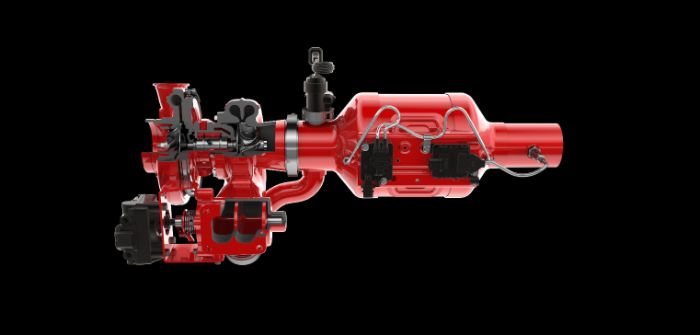Jonathan Wood, vice president – components engineering at Cummins, explains how a collaborative engineering project has created a concept for the future of diesel
Cummins has embarked on a pioneering project to deliver a new concept for cleaner diesel engine technology. The vision was to design components that integrate together and help customers address future CO2 and NOX challenges.
Indeed, Cummins’ unique position to collaborate engineering expertise across multiple business units has resulted in a new concept product called the Integrated System. Its development, which is still ongoing, follows an advanced collaboration project, involving the combined engineering expertise of Cummins Turbo Technologies and Cummins Emission Solutions, two businesses within Cummins’ Components segment.
Integrated System seeks to drive closer integration between aftertreatment and turbocharger to optimize system level performance. It consists of four core technologies, a high-efficiency turbocharger with new aerodynamics, an Integrated Rotary Turbine Control Valve that enables exhaust gases to bypass the turbine stage and enter the close coupled aftertreatment unit after the gas has been injected with urea by the new Cummins UL4 urea doser injector. The close-coupled aftertreatment unit benefits from higher exhaust gas temperatures to enable more effective emissions conversion.
When combined with the single-module, chassis-mounted aftertreatment, it has the potential to improve emissions, particularly for cold-start and urban driving operations.
The catalyst for working together
In late 2017, a high-level discussion between Cummins Emission Solutions and Cummins Turbo Technologies took place. Focused primarily around challenges for OEMs and powertrain diversification, the two businesses began discussing plausible design inventions that could be developed to help customers meet future CO2 and NOX challenges.
Key to the collaboration was gaining an even deeper understanding the capabilities of each business unit. This, in turn, prompted discussions and ideas around the development of a single system for the first time. In collaborating, the businesses were able to develop a system whereby the turbocharger could run as efficiently as possible without impacting exhaust gas temperatures to the aftertreatment.
Collectively, the team have had to consider and work across mechanical, chemical, aerodynamic and electronic engineering to develop this concept.
The project is increasingly providing valuable insights, but there were clear challenges to overcome. One of the greatest since the project launched internally in 2018 has been for the engineers to gain a deeper understanding about the details around the technologies in each other’s business unit. This was vital for the success of the project. Through bespoke learning sessions, the engineers gained a deeper understanding of technologies outside their specialist areas and from this came innovation and future design ideas for Cummins Components.
The benefits of the conceptual system are far reaching, and the R&D advantages of collaboration are continuing to extend beyond this project.
The drive to make diesel cleaner and more efficient
With a focus to make diesel engines that are cleaner, simpler and more efficient, research at Cummins concentrated on innovative ways for achieving optimized heat management and increased fuel economy to improve overall engine performance. Alongside improved performance, the two businesses have looked at how they can partner with customers to deliver other important benefits such as cold-start.
Approaching a problem from multiple viewpoints has been central to the speed in which the concept was developed and showcased last year. The unique setup of Cummins, with numerous business units coming under the umbrella of the Components segment, provides a platform to work together toward continued innovation in diesel.
Practically, Cummins can connect with teams from across the business and all over the world through its digital communication tools, to partner on processes and milestones to develop a product for market and address challenges that arise.
While the desire of colleagues is unwavering, there are of course variables outside of their control that will determine how the Integrated System develops into a product for future powertrains. The next stage of regulatory change, anticipated to be referred to as Euro 7 in line with previous legislation, is yet to be revealed.



